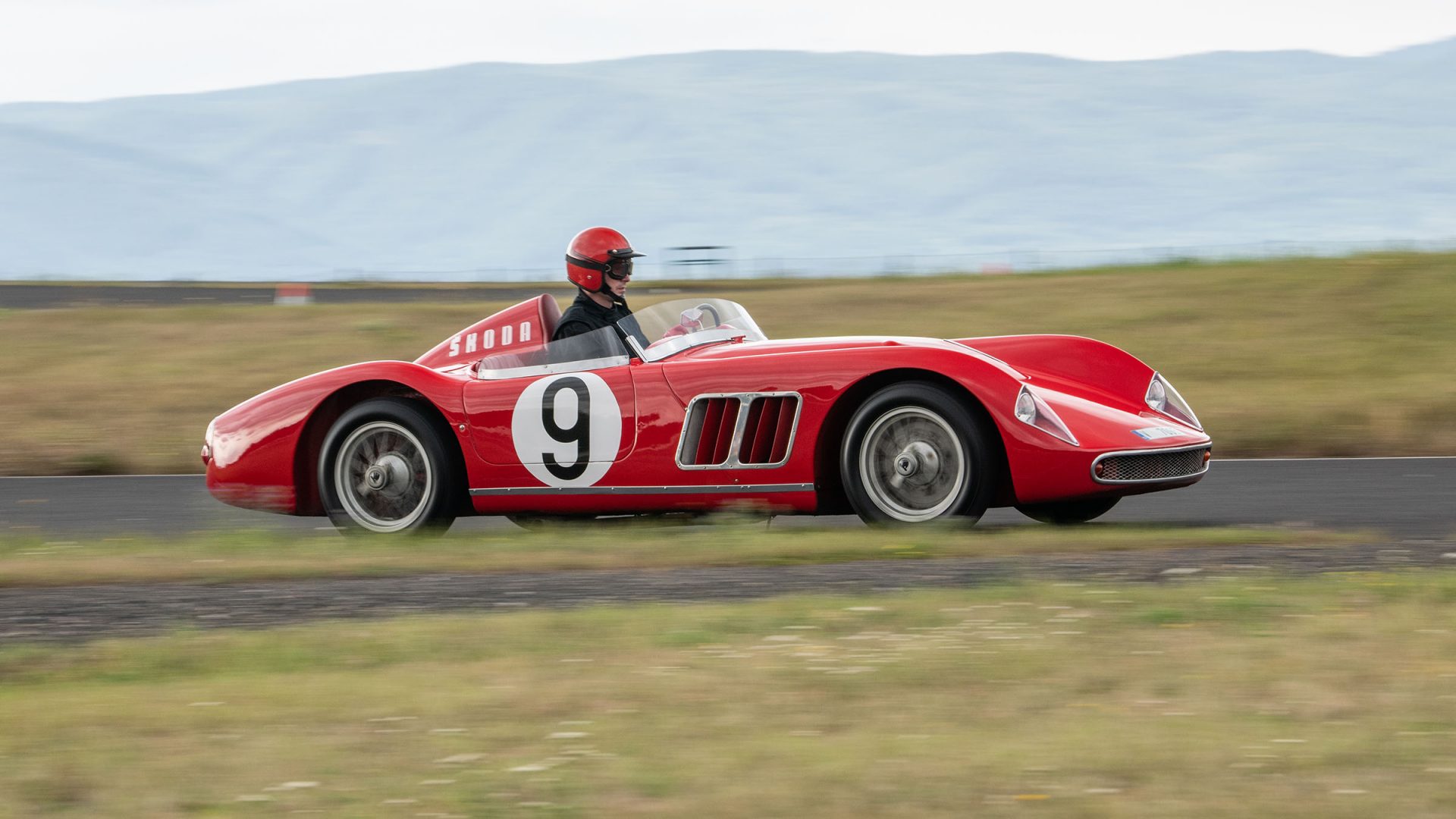Beautiful bodywork from the 1950s, weighing just over half a ton and with a top speed of up to 200 km/h. The ŠKODA 1100 OHC is an extraordinary sports car that just reeks of history and petrol. It enamoured even Jan Kopecký, many-times Czech rally champion and 2018 WRC2 champion.
ŠKODA takes meticulous care of its valuable heritage, built up during the 125 years of its existence. Thanks to this effort, many wonderful machines that remind us of the world importance of this Czechoslovakian carmaker have been preserved until today. One of them is the ŠKODA 1100 OHC, only four of which were made in the second half of 1950s. The car is actually in good enough condition for ŠKODA Motorsport factory driver Jan Kopecký to take it through its paces on a racing circuit.
“It’s a beautiful car, a real gem. I’m glad that such a car was not only preserved until today, but also in a driveable and fully functional condition. You can feel the honest-to-goodness handiwork of engineers and mechanics, a touch of history. When you sit behind its wheel, you smell petrol right away,” remarked Kopecký, describing his first impressions.
The 1100 OHC got its name from the 1.1-litre, four-cylinder engine that’s mounted behind the front axle and fitted with dual overhead-camshaft valvetrain. Unlike the brand’s previous sporty cars, such as the ŠKODA SPORT and ŠKODA SUPERSPORT, the 1100 OHC was a pure racecar. The fiberglass body was built around the tubular spaceframe instead of using a chassis borrowed from a production car. This was one of the reasons why the total weight of this roadster was just 550 kg. The weight was also balanced almost perfectly between the front and rear axles, and with the car’s height being less than one metre, its centra of gravity was also incredibly low. With 92 horsepower (excellent 85 horsepower per litre of displacement), it was able to reach speeds of 190 to 200 km/h.
“The twin-carburetted engine is great and sounds wonderful. Driving such a car is a wonderful experience – and with the exception of the large steering wheel, it even offers a surprisingly good driving position. In its era, it was a top racing machine. Of course, I was very careful, as it is the oldest racecar I have ever driven. It’s got very narrow tyres and the body twists quite a lot by today’s standards. It’s hard to imagine how it would be to drive it flat out in an endurance race,” Kopecký commented after the drive.
The car offers such an impressive performance because its creators had great ambitions from the very beginning – the goal was to build a car able to take part in the famous 24 hours of Le Mans endurance race. They managed that, but due to the political situation, the car never made it to the starting line. The ŠKODA 1100 OHC kept winning at home and, for example, in 1961, Miroslav Fousek and Jaroslav Bobek managed to drive it to the gold and the silver finish in a race in Saint Petersburg.
The car’s advanced (for its time) features included independent rear suspension, 15-inch wheels sprung with torsion bars, and a five-speed gearbox. The high-octane aviation-grade fuel went into the fuel tank. Beside the two open-top cars, two coupes were built as well, but sadly those haven’t been preserved.





